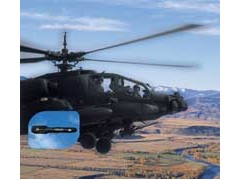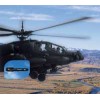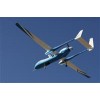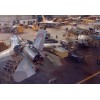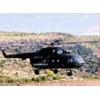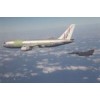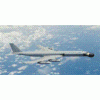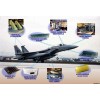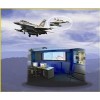The PES is a system designed for the evaluation and screening of candidates for pilot training. The PES is replacing some of the old selection systems used today. Its purpose is identification and selection of the appropriate candidates, and reduction of the high costs of pilot training.
The PES is a self contained and autonomous system that performs candidates evaluation, in an objective manner - without instructor's intervention. The PES can be used for the massive screening of a large number of candidates or for research purposes.
The candidate activities are:
a. Tutorial (about 30 minutes)
b. Training (about 20 minutes)
c. Test (about 60 minutes)
The test consists of 17 scenarios, 3 minutes each. The first scenario is relatively easy while the following ones become progressively more and more difficult. The candidate's workload increases until his breakdown. The breakdown graph is analyzed and a final grade reflecting the candidate's abilities is obtained.
The analysis (about 1 minute) can be performed off-line, after running numerous tests separately.
The system consists of a pilot station and an instructor station. The pilot station which is a flight simulator, consists of a flight model, steering devices and displays which represent in a simplified way the relevant world of the pilot. The instructor's station is used to register the candidate (id, course no. etc.), obtaining results and creating new tests. The system includes an application generator which enables the user to built a new test or to change the existing one. In addition, the user can add or alter parameters and weights in the analysis-system. This flexibility allows an adaptation of the test and the analysis for the needs of the customer and his specific population.
In addition, the system includes a "Not-My-Day" mode which allows periodical tests of the subject's ability to fly. The system learns and recognizes each pilot. Utilizing a data base the system compares the pilots' present ability relative to his stored personal average. Accordingly, the system recommends authorization to fly or grounding.
Unique system features:
Integrated test - vs. single weighted tests
Breakdown analysis - does not presently exist in other systems
Objective test - vs. subjective evaluation at the present
Mobility - mobility of the system for the purpose of its use in remote locations

